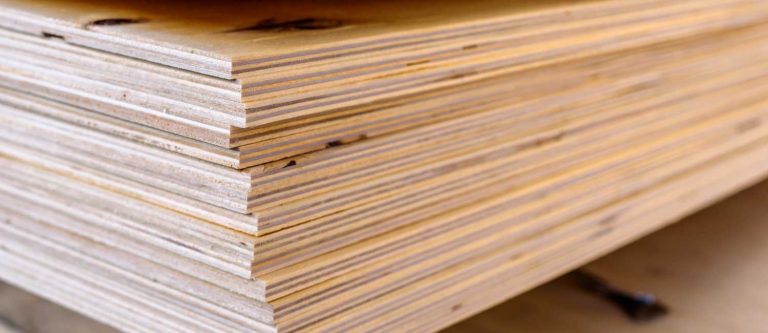How Much Does Plywood Weigh?

The actual weight of plywood varies by product and manufacturer, which can make it challenging to
predict the weight perfectly. On average, a 4′ x 8′ sheet of 3/4″ softwood plywood weighs about
61 pounds, but some sheets can weigh well over 80 pounds.
There are various factors that affect the weight of a sheet of plywood and other sheet goods.
What Affects the Weight of Plywood
A few factors impact the weight of plywood. The precise thickness of the panel is a major factor in the weight. The actual thickness of plywood is almost always thinner than the advertised nominal thickness and varies from product to product.
In addition to thickness, the type of plywood is a major factor in how much it weighs. Different species of wood have varying densities. For example, hardwood lumber weighs more than softwood lumber due to higher densities.
You can calculate the weight of different species of lumber using our lumber weight calculator to
get an idea of how much different lumber species might impact the weight. With that said, most
hardwood plywoods use softwood layers for the inner plies and hardwood veneers only for the
outer surfaces.
The number of plies can also play a role. Plywood comes in three, five, and multi-ply varieties.
The more plies the material has, the thicker and stronger it will be. It will also weigh more
compared to a material that has fewer plies.
Different types of plywood also contain varying amounts of glues and resins, which affect the
weight significantly. Products such as medium-density fiberboard (MDF) are composed of more glue
and resin than veneer core plywood, which will impact the weight.
In addition to using different amounts of glues and resins, different types of resin vary in
weight. There are some varieties of plywood that use special resin to reduce the weight, for
instance, lightweight plywood products.
Different grades of plywood may also have more or fewer voids than others, which might slightly
impact the weight.
For example, marine-grade plywood is much heavier since it is composed of more than five veneers
that are each treated for moisture resistance and have been infused with chemical treatments for
durability. These high-grade products are often much heavier than a typical piece of plywood.
Exterior-grade pressure-treated plywood that has been infused with chemicals to resist rot and
insect damage will also be heavier than an interior-grade untreated variety.
On the other hand, aircraft-grade and ultra-light plywood products will be significantly lighter
than their standard counterparts since they use special lightweight glues and wood cores.
Plywood Weight Charts
The charts below show the weight of plywood panels at different thicknesses. Weight may vary slightly by manufacturer and product.
Tips to Reduce Plywood Weight
There are a few things you can do to reduce the weight of plywood.
When you’re purchasing or moving plywood, it’s easiest to cut the sheets down to manageable
pieces as early as possible, particularly if you will need smaller pieces later on. This way,
each piece weighs much less and is easy to handle. Lumber distributors and home improvement
stores can often cut the material for you.
This won’t necessarily work, however, if you need the panels at full size for the project you
are undertaking.
To reduce the weight of plywood in a cabinet or structure, you can drill holes or cut out
sections strategically in places that are not visible or critical for structural integrity.
You can also use the thinnest sheet of plywood that is still strong enough for the project at hand. Since a sheet of 3/4″ plywood weighs 50% more than a sheet of 1/2″, using the thinner sheet where possible can reduce a ton of weight in the overall project.